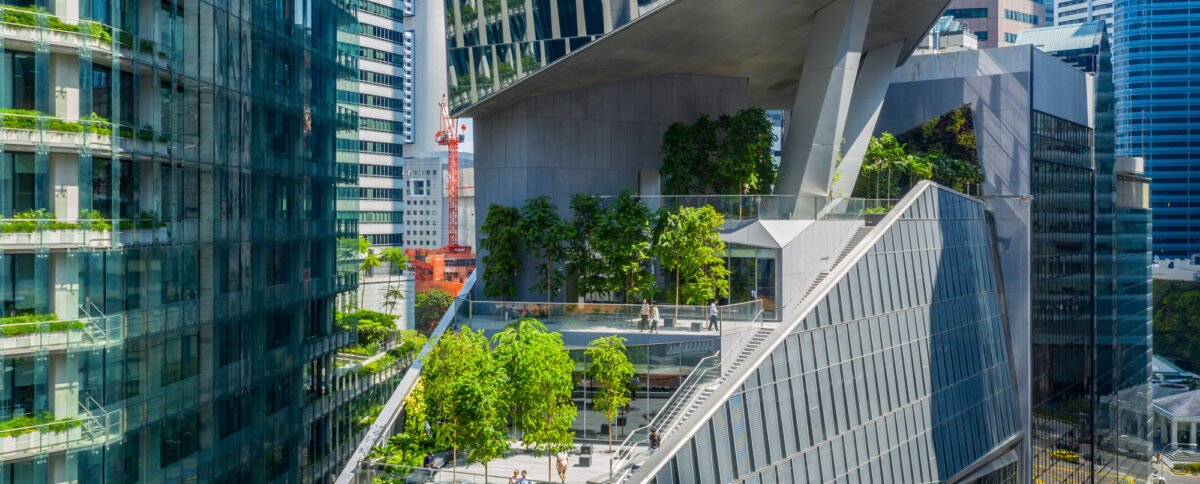As the world shifts towards more eco-friendly construction practices, the demand for sustainable materials is growing rapidly. One material that stands out in this movement is aluminum, particularly when used in green building and sustainable architecture. Its unique properties—lightweight, durable, and recyclable—make it a top choice for architects and builders aiming to meet environmental standards while maintaining design flexibility and structural integrity.
In this blog, we will explore the role aluminum plays in green building, the benefits it offers to sustainable construction, and how our company’s aluminum extrusions are contributing to a greener future.
Why Aluminum is Key in Sustainable Architecture
Aluminum is increasingly becoming a go-to material in the construction industry for its versatility and eco-friendly characteristics. Here’s why:
-
Recyclability One of the biggest advantages of aluminum is its ability to be recycled indefinitely without losing its strength or quality. In fact, recycled aluminum requires only 5% of the energy needed to produce new aluminum. This makes it a critical component of green building projects aiming to reduce resource consumption and promote the circular economy.
-
Energy Efficiency Aluminum extrusions are often used in energy-efficient windows, doors, and facades due to their excellent thermal performance. Aluminum’s high reflectivity also helps reduce heat absorption in buildings, which leads to lower energy consumption for heating and cooling. This makes it ideal for both commercial and residential buildings focused on minimizing their environmental impact.
-
Durability and Lightweight Strength Despite being incredibly lightweight, aluminum is highly durable and resistant to corrosion, making it perfect for building structures that need to withstand harsh environmental conditions. This longevity reduces the need for frequent repairs or replacements, which in turn lowers material waste over the building’s lifecycle.
-
LEED Certification and Green Building Standards Green building certification programs like LEED (Leadership in Energy and Environmental Design) are becoming more popular as businesses and homeowners seek to build sustainable structures. Aluminum plays a crucial role in achieving LEED points due to its recyclability, energy efficiency, and minimal environmental footprint during the production process. Incorporating aluminum into building designs can help architects and builders meet stringent environmental standards while maintaining aesthetic appeal and structural performance.
Applications of Aluminum in Sustainable Architecture
-
Building Facades and Cladding Aluminum extrusions are commonly used in facade systems due to their ability to create lightweight yet strong structures. These facades can incorporate high-performance glazing systems, providing excellent insulation and reducing energy loss from buildings.
-
Windows and Doors Aluminum frames for windows and doors offer superior thermal insulation, helping reduce energy consumption in buildings. Additionally, their strength allows for larger windows and openings, which can improve natural lighting and reduce the need for artificial lighting—another energy-saving benefit.
-
Roofing and Solar Panels Aluminum’s reflective properties make it an excellent choice for roofing, reducing heat absorption and lowering cooling costs. Aluminum extrusions are also widely used in solar panel mounting systems, providing strong yet lightweight support for renewable energy systems, further enhancing a building’s sustainability credentials.
How Our Aluminum Extrusions Contribute to Green Building
At our company, we take pride in providing custom aluminum extrusions that meet the highest standards of sustainability and performance. Our products are manufactured using a high percentage of recycled aluminum, minimizing the environmental impact of raw material sourcing. Additionally, our precision engineering processes ensure that each extrusion is tailored to the specific requirements of the project, reducing waste and optimizing material use.
By working closely with architects, builders, and designers, we ensure that our aluminum solutions not only meet the structural needs of the project but also contribute to its overall environmental goals. Whether it’s improving energy efficiency, enhancing the building’s durability, or supporting renewable energy installations, our aluminum extrusions are designed with sustainability in mind.
Conclusion: A Material for the Future
As the construction industry continues to prioritize sustainability, aluminum will undoubtedly play an increasingly important role in the future of green building. Its recyclability, energy efficiency, and durability make it an ideal material for creating environmentally friendly structures that are built to last.
At our company, we are committed to delivering sustainable aluminum solutions that help shape the future of green architecture. If you’re working on a green building project and want to learn more about how our aluminum extrusions can contribute to your sustainability goals, feel free to reach out to our team.


